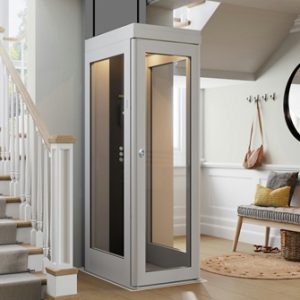Choosing a suitable elevator for your home involves considering several factors, including your home’s layout, budget, safety features, and personal needs. Here’s a step-by-step guide to help you make the right decision:

Determine Your Needs:
- Mobility Requirements: Do you need it for wheelchair access, elderly family members, or general convenience?
- Frequency of Use: Will it be used daily or occasionally?
- Number of Floors: How many floors does it need to serve (typically 2-3 for homes)?
Safety Features
-
Emergency Stop Button
-
Battery Backup (in case of power failure)
-
Door Sensors (to prevent elevator can’t moves if door not closed)
-
Manual lowering System (in case of system breakdown)
-
Compliance with Local Safety Standards (e.g., ASME, EN CE Certificate.)

Types of Home Elevator:
- Hydraulic Elevators:
Advantages: Smooth ride, lower cost.
Disadvantges: Need hydraulic oil for the motor.
- Traction (Cable-Driven) Elevators:
Advantages: Energy-efficient, no hydraulic oil. Higher cost.
Disadvantges: Needs a overhead machine room

Would you like recommendations based on your home’s specific layout?

